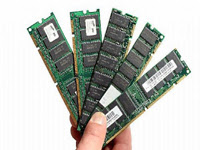How to find out if my RAM is defective
The CD version comes as an .iso file. The USB version comes with a program that prepares a flash drive, so that it can boot your PC and automatically run MemTest86.
If you go with the USB version, you'll have to launch an .exe program in Windows, which brings up a busy and possibly intimidating little program. Don't worry; just go through the four steps onscreen. And don't use a flash drive with files that you need on it.
Then plug in your computer, insert the CD or flash drive (if it's not already inserted), and boot. You may be told to go into Setup because of the RAM change. Do so. Once there, check to make sure that it's showing the right amount of RAM, correct it if it isn't, then save and exit.
The PC will reboot again, and MemTest86 will start automatically. It will test all of your RAM, and when it's done (which could be an hour or more), it will start all over with a second pass. Just to be safe, I recommend three passes. Or you could start it before going to bed, and let it run all night.
Still Can't Fix?
Get More Help for information about contacting us on social networks or via email, posting on Facebook, and more. Be sure to include error, stop code or problem specification you're getting, if you know it.



No comments:
Post a Comment